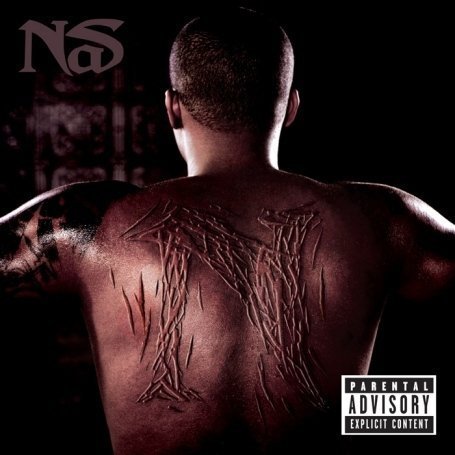
Mickey Hess indicates that, "artists work to produce marketable music for mainstream listeners yet at the same time to maintain a necessary level of authenticity to a place of cultural origin" (Hess 298). This plays into the widely discussed concept of "keeping it real" in which rappers strive to appeal to their respective audiences through an attempt to appear authentic. Olson and Shobe indicate that, "the trick for rappers then is to appear to live the lifestyle they rap about and to make it as believable as possible" (Olson et. Al 1008). One of the aspects of "making it" as a hip-hop artist involves "proving our place in the world through specific displays" and status indicators (Rehn et. al 18).

The album cover of Nas' untitled album from 2008 clearly demonstrates this quest for authenticity. The most salient aspect of this image are the scars on the back of an African American male, who viewers presume is Nas himself. A sign is composed of two parts, a signifier and a signified. In this image, the signifier, or the "sound or image that is attached to the signified", are the scars on the man's back (Rose 113). The scars signify the oppression and mistreatment of African Americans during the era when slavery was an acceptable practice. This further signifies the idea that Nas is authentic, reinforcing Hess' ideas that hip-hop artists strive to maintain connections to their cultural roots, while simultaneously attempting to increase their record sales. Information value plays an important role within this album cover. The given information, which Kress and Van Leeuwen indicate resides on the left side of an image, consists of the text, "Nas" (which also serves as a form of anchorage). The new information (the image of the man and his scars), resides on the right. This in turn allows the viewer to draw an inherent connection between the rapper, Nas, and his display of authenticity (the scars). A semiotic analysis of the different aspects of this image speaks to the larger discursive goals of those who produced it. The bodily scars depicted in the album cover bring about questions of race and the unique way in which Nas wears his authenticity. The cultural significance of the scars on his back (the historical struggles of the African American people) is far more symbolic that any other form of body art or item that he could place on his body (i.e. tattoos or jewelry). This in turn reinforces Hess, Olson, and Shobe's ideas related to the ways in which rappers strive to demonstrate their authenticity in ways that are both believable and culturally significant. Ultimately, this demonstration of authenticity is employed in an attempt to stimulate consumption from rap enthusiasts, as a result of Nas' depiction as an authentic artist who stays true to his cultural origins.
Many hip-hop artists who "make it" are often faced with a difficult decision once a certain degree of notoriety is obtained. They must choose between "keeping it real" through "continuing to live by the credo of the 'hood', whose organizing principles are 'taking care of business' (making money) and gaining 'juice' (respect)", or sacrificing the credo in order to solely pursue monetary gain (otherwise referred to as selling out) (Basu 374). The racial dynamic comprised of those who consume rap music is steadily increasing. Traditionally, consumers of hip-hop were African American youth, yet a sparked interest among non-black listeners has altered the genre noticeably. Rap music has spread "beyond the confines of the ghetto, not only in terms of who is buying the CDs, but in terms of who are making the CDs as well" (Olson et. Al 995). The struggle for authenticity within hip-hop culture is an interesting subject for analysis. When the movement first originated, hip-hop music existed as means of expression in which one could voice one's concerns in social, cultural, and or political spheres. Currently, producers and artists often exploit the capitalist nature of the music industry in order achieve financial gain. Thus, the gradual disappearance of authenticity contributes to the conception of hip-hop as a commodity rather than a means for meaningful expression of ideas.